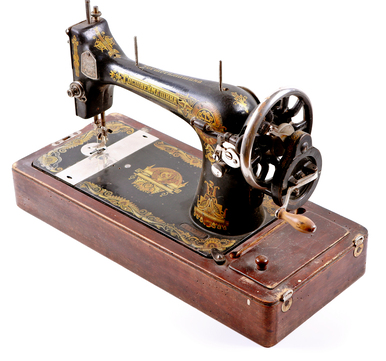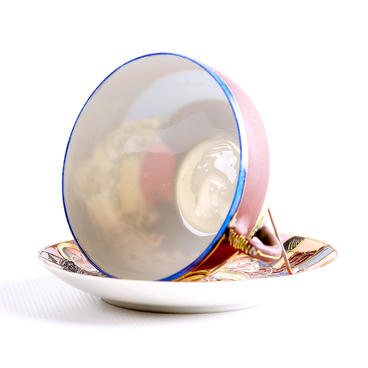The table clock displayed at the hall ‘Noble estates’ of the Kasimov Museum-Reserve, was made at the end of the 19th century. Earlier, it belonged to the Golitsyn family and was in their princely estate in the village of Dubrovka, Kasimov District. The estate was nationalized after the Russian revolution, and the clock, along with other items, was given to the museum collection.
The wooden clock case is rounded on its top. There are four metal legs on the bottom and small windows with carved lattice on the sides. The clock face is made of light metal with Roman numbers around the circumference and two openwork hands in the middle. The clock has relief overlays of yellow, gold like metal around the clock face.
The first table clocks appeared in houses in the early 15th century in Europe. They were made by unprofessional watchmakers — mostly by locksmiths or gunsmiths. But such devices were not in demand due to their poor accuracy. Citizens checked the time mainly by the city clock which was in central squares.
In the middle of the 17th century, craftsmen began to produce pendulum clocks. It swung and generated energy; the gears ran — so the clock worked. Thanks to this technology, mechanisms became more accurate. The first pendulum devices had an error less than 1 minute per day, and the next models — up to 10 seconds per day.
At first, customers preferred only large wall clocks. As clock case was getting more compact and lighter, craftsmen started to produce table clocks to put them in living rooms and studies.
At the end of the 17th century, the first ‘plate clocks’ appeared in Germany. They were wall clocks with a round face clock which was decorated with paintings. In the 17th century, craftsmen came up with an idea of ‘picture clocks’. Landscapes were depicted on their clock faces, and then, interior items were put in gilded frames.
You can find a few clocks from different eras in the collection of the Kasimov Museum-Reserve. For example, there is a pocket watch of the 19th century which belonged to the Kasimov merchant Vasily Barkov, old sundial that determined the time depending on the place of the sun, and Soviet alarm clock ‘Rocket’.
The wooden clock case is rounded on its top. There are four metal legs on the bottom and small windows with carved lattice on the sides. The clock face is made of light metal with Roman numbers around the circumference and two openwork hands in the middle. The clock has relief overlays of yellow, gold like metal around the clock face.
The first table clocks appeared in houses in the early 15th century in Europe. They were made by unprofessional watchmakers — mostly by locksmiths or gunsmiths. But such devices were not in demand due to their poor accuracy. Citizens checked the time mainly by the city clock which was in central squares.
In the middle of the 17th century, craftsmen began to produce pendulum clocks. It swung and generated energy; the gears ran — so the clock worked. Thanks to this technology, mechanisms became more accurate. The first pendulum devices had an error less than 1 minute per day, and the next models — up to 10 seconds per day.
At first, customers preferred only large wall clocks. As clock case was getting more compact and lighter, craftsmen started to produce table clocks to put them in living rooms and studies.
At the end of the 17th century, the first ‘plate clocks’ appeared in Germany. They were wall clocks with a round face clock which was decorated with paintings. In the 17th century, craftsmen came up with an idea of ‘picture clocks’. Landscapes were depicted on their clock faces, and then, interior items were put in gilded frames.
You can find a few clocks from different eras in the collection of the Kasimov Museum-Reserve. For example, there is a pocket watch of the 19th century which belonged to the Kasimov merchant Vasily Barkov, old sundial that determined the time depending on the place of the sun, and Soviet alarm clock ‘Rocket’.


